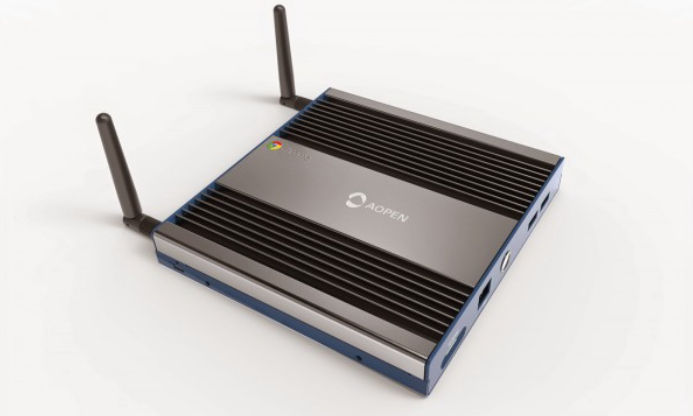The General Purpose Kiosk Computer
WRITTEN BY: TelemetryTV, 05-27-2015

The iPad is a revolutionary device. It exposed computing to a much wider audience than the stodgy PC ever could.
While many factors drove its success, one of the most notable factors as mentioned by Adam Engst, is that it's a blank slate, it becomes whatever application it is running.
It may seem trivial at first glance, but this simple fact made it enormously accessible to the masses, especially the computer illiterate. It provided ease of deployment, the predictability of UI and simplified UX. A similar sort of advancement seems about to happen to desktop computing and this time it's being driven by Google's Chrome suite of products.
Google has had enormous success with the Chromebook platform which garnered the top three spots for best selling laptop on Amazon.com during the 2014 Christmas season [2].
In May of 2012, Google launched the first version of the Chromebox (a small Mac Mini style PC) which delivers a ChromeOS experience to the desktop for only $200. This year they plan to release the Chromebit, a PC on a flash stick for under $100. While these products are real category winners in the home desktop arena their true potential lies within commercial applications.

Google introduced the Single App Kiosk mode as a part of the Chrome Management functionality. These products have the potential to create a similar single purpose transformation that the iPad brought to computing. Using Chrome Device Management to enable kiosk mode, the Chromebox can be set to boot right into a specific application, making that device a single purpose application.
At TelemetryTV, we went on a long search for a solution that allowed us to persistently display our streaming metrics on televisions backed with enough horsepower to drive our animations. Previous solutions that were Mac or PC based required far too much preparation to deploy at scale. In addition, they'd always break which meant we'd have to investigate, intervene, and fix issues on a continual basis; ultimately the frustrations outweighed the benefits.
With Chrome Management and Chromebox powering our TVs, these problems went away, frustrations subsided, and our TV displayed persistently.
Now when a customer needs to build a display our integration partner shows up, provisions the Chromeboxes with the Chrome Management console, hangs the display and attaches a Chromebox and it boots into a Telemetry pairing code. All the customer needs to do is pair it to their account, no interaction or significant maintenance needed.

A Chromebox based kiosk is a general purpose computer that hands-off operation allowing us to deploy many displays with little overhead. Using the Chrome Device Management console we can ship Chromeboxes to our customers that are in effect TelemetryTVboxes. We didn't need to develop hardware or build our own custom Linux distribution, we just used the Chrome Device Management console, provisioned our Chromeboxes with our Chrome Telemetry app in kiosk mode and off we went. For us, this was the difference between doing and not doing.
[1]: https://tidbits.com/article/11152 "Why the iPad Is a Blank Slate, and Why That's Important"
[2]: http://www.businesswire.com/news/home/20131226005066/en/Record-Setting-Holiday-Season-Amazon-Prime











